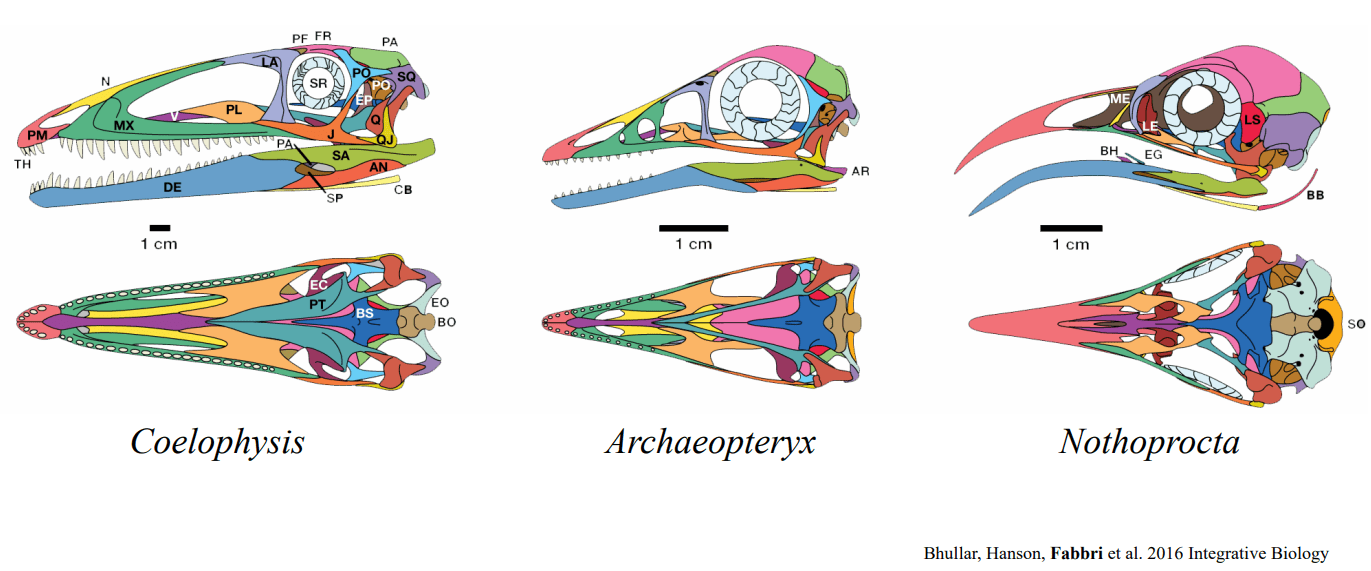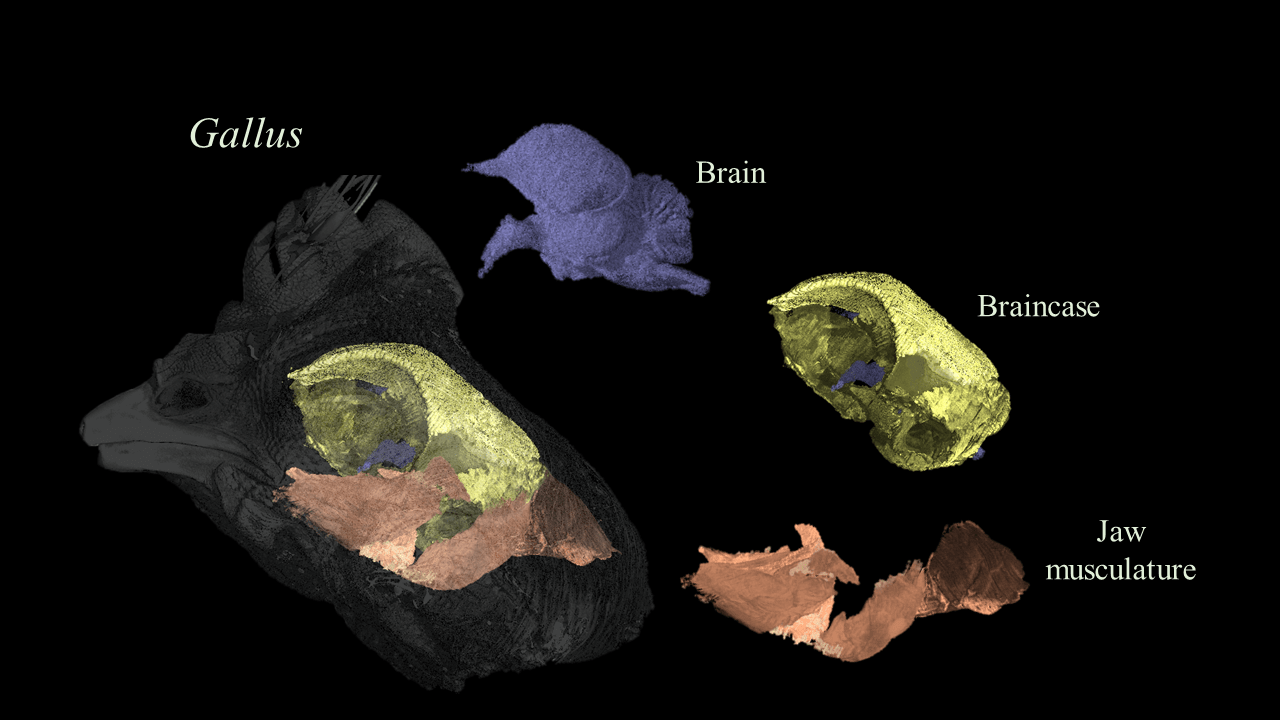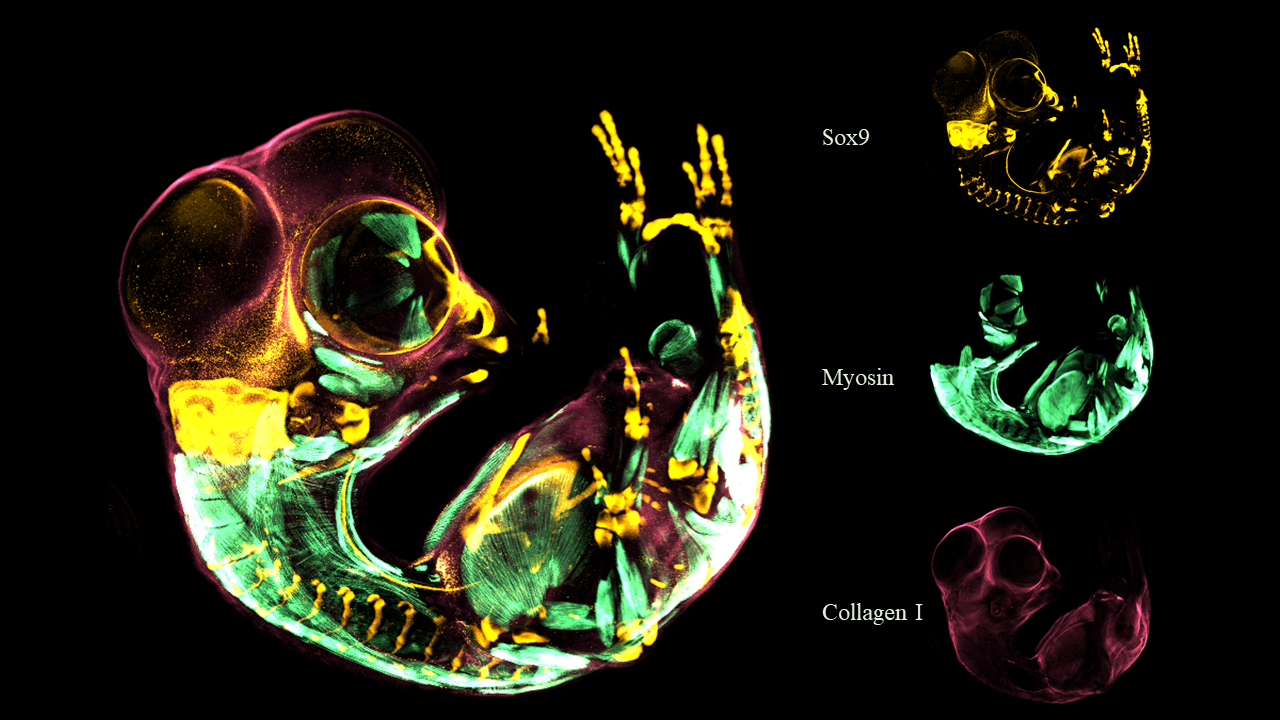
Evolutionary transformation of the skull along the dinosaur-bird transition. Colors indicate the same bone. Image modified from Bhullar et al. (2016)
Why the fossil record?
More than 30.000 species of amniotes (mammals, lizards, turtles, crocodiles, and birds) are alive today. However, their incredible morphological and ecological diversity is the product of hundreds of millions of years of evolution: 99.9% of the species that ever lived on our planet are extinct and can only be studied through the use of fossils.
The fossil record is, therefore, vital to understand the history of amniote groups in deep time, conceptualizing the series of events that favored the divergence of their extant diversity, origin and radiation.
Developmental formation of the head in a mammal embryo (source: gifer.com)
Why the study of embryos?
The geological timespans over which the series of events giving birth and rise to the major amniote clades are recorded is simply too broad and imprecise to approach questions at the mechanistic level necessary to understand the evolutionary process. In order to clarify how certain traits evolved, I study the plasticity of embryos and the developmental pathways characterizing them. At the beginning of development, embryos belonging to different groups are extremely similar to each other in their morphology. It is only later in development that unique traits, such as the bird beak or the mammalian ear, appear.
This opens new avenues for the study of morphology, and in the understanding of constraints and innovations affecting the rise of the major amniote clades.


